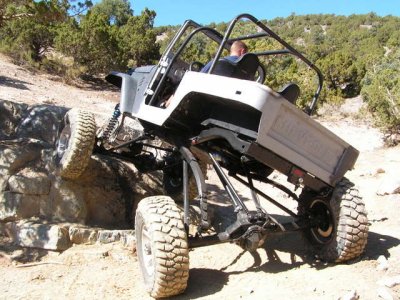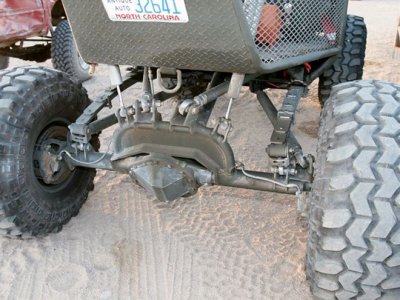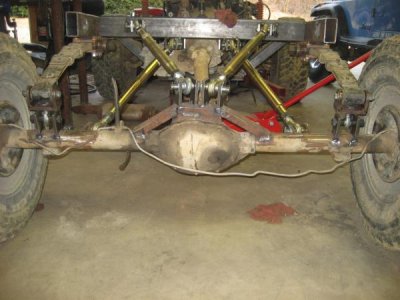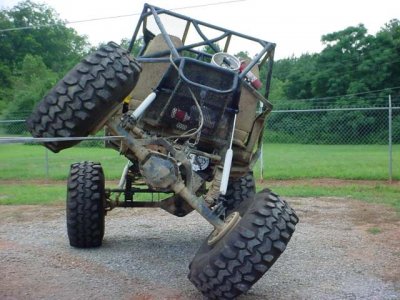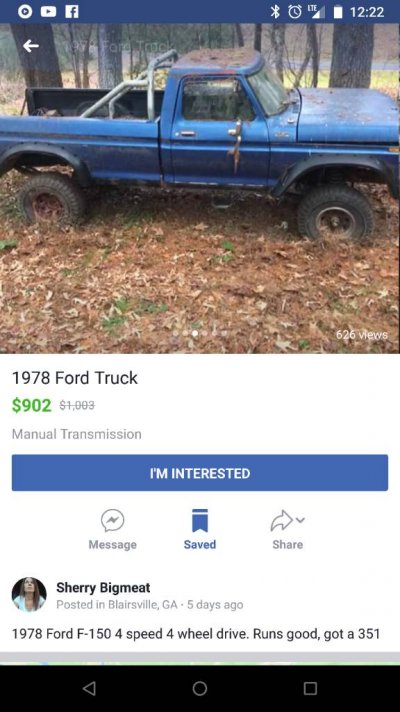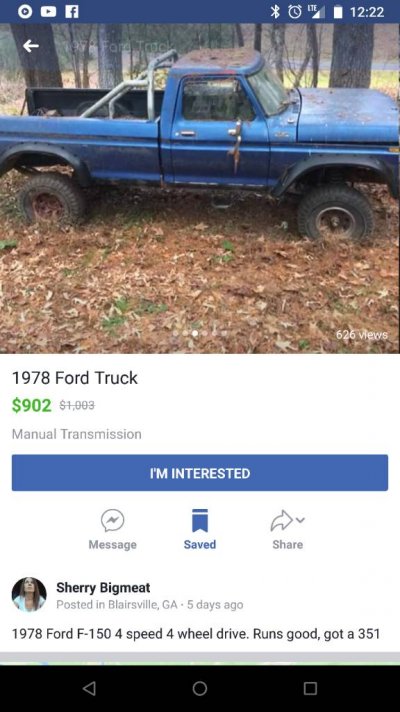Russell Lewis
Full Access Members
Ok, to be 100% honest: this project is an ambitious desire.
But, if you want to do straight axle swaps front and rear here is what I recommend (better be handy with a welder and be able to fabricate some parts):
Leaf springs front and rear; by far the easiest.
Realistically any matched set of axles (same gearing) can be made to work. I recommended the CUCV axles (from military GM vehicles from mid 70s-late 80s) because they fit the stipulations you made earlier (4.56 gears, possible lockers) from the factory. That and they are basically THE coveted factory built readily available off road axle sets. Tried and true, tough and reliable. Only “downfall” is they are 8lug (I say grab some HMMWV rims and tires, bolt right on and gives you 37-12.50 tires). There are several varieties for the rear: full floating/semi-full floating, drum brake, disc brake; but all are built off of the basic 14 bolt platform.
Springs: easiest thing to do is figure out your required amount of lift to clear the tire size you want use, then buy some readily available off-the shelf springs. 80s Chevy lift springs tend to be pretty affordable and easy to find. Once you know what the springs you plan to use are, then you can make your spring mounts for the frame and spring perches for the axles. The spring mounts are typically very simple. Another bonus to leaf springs is that they don’t have to be a perfect 90 degrees to the axle. For example the frame rail is not perfectly straight on the front end, this results in the springs being on angle like this: / \ which is OK and simplifies your install a bit. Obviously you can’t mount the springs at a 45, but not being 90 is ok.
Brakes: i highly recommend a hydraboost brake booster. Utilizes power steering pump pressure to run the brakes. Consistent power especially if you end up on the brakes a lot and you will never run out of vacuum.
Steering: you have a variety of options for steering, you will need to choose one. At a minimum you will have to do some trial and error (or in-depth research over on Pirate) to establish correct pitman arm length, then steering geometry. Basically a bar that goes from the pitman arm to the drivers side steering knuckle. This should be as perpendicular to the axle as possible. You can go to a hydraulic ram style steering, but that will require additional fabrication, parts and plumbing.
Driveshafts: connecting the t-case to each axle requires a driveshaft. Your stock driveshafts are no longer the correct length and cannot be used. Upgrade them while you are building. Since the CUCV driveshaft u-joints are 1350, I recommend just having shafts built with 1350 joints, that way you only have to carry 1 size of u-joint for a spare. There are adapter u-joints that CAN be used, but they are a gamble.
Ensuring all your fabrication, spring mounts and perches are square/plumb/level is THE most important thing. You need to make precise measurements for drilling holes, welding on tabs, etc. because 1/8” off at the frame compounds significantly at the wheel. 1/8” difference is spring mount from d side to p side can result in 1.5” difference at the actual wheel when it comes time to aligning. Nothing will drive you more crazy than having a death wobble of consistent pulling/pushing to one side because of a poorly laid out spring mount.
Most of the 37 from the military are timed out due to age not wear. Here’s how to check
For tires manufactured in the year 2000 – present
The date of manufacture is the last four digits of the DOT code. The first two digits are the week of manufacture, and the last two digits are the year. For example, if the last four digits of the DOT code are 0203, that means that the tire was manufactured during the second week of the year 2003. Pretty simple, right? However…if your tires were made before 2000, it gets a bit more complicated.
For tires manufactured before the year 2000
The date of manufacture is the last three digits of the code. The first two digits refer to the week within that year. For example, if the last 3 digits are 022, it means that the tire was manufactured in the second week of the year, and the year is the second year of the decade. This is where it gets confusing -- there's no universal identifier that signifies which decade, so in this example the tire could have been manufactured in 1982 or 1992. Some tires do have a small triangle following the DOT code to indicate the 1990s.


